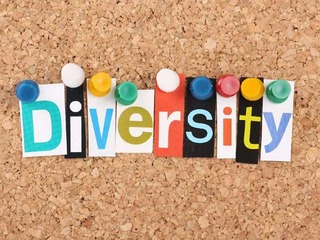Digital health funding declines for the third year in a row
AI-enabled digital health startups raised $3.7B, 37% of total funding for the sector
Read more...
Like most other tech companies that have released diversity stats over the last year or two, Twitter has not been up to snuff in that department.
The company has pledged to do better, though, and now it is making good on that promise, hiring Jeffrey Siminoff as its new VP of Diversity and Inclusion, it was revealed on Monday.
The announcement came in the form of a Tweet from Brian Schipper, the Vice President of Human Resources at Twitter.
Welcome to the flock @jmsSanFran! Thrilled to have you lead global Diversity & Inclusion at Twitter.
— Brian Schipper (@SkipSchipper) December 28, 2015
Siminoff certainly has experience in this area, having spent the last two and a half years as the Director of Worldwide Inclusion & Diversity at Apple. Prior to that he was Managing Director of Human Resources at Morgan Stanley for three years.
Super excited to join @Twitter next month as VP Diversity & Inclusion, joining an incredible team to make #InclusionImpact.
— Jeffrey Siminoff (@jmsSanFran) December 28, 2015
Siminoff will have plenty of work to do. In it's diversity report, released in 2014, Twitter revealed that it had 70% men, and only 30% women, which was worse than Facebook and Yahoo. At Twitter, tech jobs were 90% taken up by men, and leadership jobs were 79% men.
When it was broken down by ethnicity, Twitter was 59% white, and its tech jobs nearly the same number.
Over this past summer, Twitter unveiled diversity goals so that the makeup of the company would "reflect the vast range of people who use Twitter."
That included increasing women overall to 35%, women in tech roles to 16%, and women in leadership roles to 25%. The company also wanted to increase underrepresented minorities overall to 11%, increase underrepresented minorities in tech roles to 9%, and Increase underrepresented minorities in leadership roles to 6%.
"As we look ahead, we see opportunity rather than a challenge: an opportunity to build a platform and a company that will better serve the diverse community on Twitter and the increasingly diverse one at Twitter," the company wrote.
There have also been reports that Twitter will be shaking up its board of directors in order to make that part of the company more diverse as well.
(Note: Twitter has clarified that its ethnicity numbers, both the percentages it reported and its 2016 goals, are for the US only)
Solving the diversity problem in tech
Diversity was not something you heard talked about much in Silicon Valley even a few years ago, but now not only are companies being more transparent about who they are hiring, but some of them are also putting their money where their mouths are.
That includes Apple, which put $50 million into creating outreach for minorities, and women, in tech.
That included partnering with the Thurgood Marshall College Fund, a non-profit that supports students enrolled in public, historically black colleges and universities (also known as HBCUs), such as North Carolina A&T State University, Howard University, and Young's alma mater Grambling State University.
It also partnered with the National Center for Women and Information Technology (NCWIT), a non-profit that helps create a broader pipeline of female technology workers.
Intel also announced it was investing a whopping $300 million to "build a pipeline of female and under-represented engineers and computer scientists," as well as to actively support hiring and retaining more women and under-represented minorities.
Intel also revealed its plan to fund programs that celebrate diversity, including the International Game Developers Association, the E-Sports League, the National Center for Women in Technology, the CyberSmile Foundation, the Feminist Frequency, and Rainbow PUSH.
Last year, Facebook, Box and Pinterest announced that they had gotten together to launch a new mentorship program called WEST (Women Entering and Staying in Tech). The idea is to get more women interested in computer science, and to help them be prepared for the tech jobs of the future.
WEST will feature women who have technical jobs at all three companies, who will serve as one-on-one mentors. They will meet with mentees individually and as a group, in-person and online, over the course of a year.
This news was first discovered by TechCrunch.
(Image source: hitc.com)
AI-enabled digital health startups raised $3.7B, 37% of total funding for the sector
Read more...OXcan combines proteomics and artificial intelligence for early detection
Read more...Nearly $265B in claims are denied every year because of the way they're coded
Read more...Startup/Business
Joined Vator on
Twitter is an online information network that allows anyone with an account to post 140 character messages, called tweets. It is free to sign up. Users then follow other accounts which they are interested in, and view the tweets of everyone they follow in their "timeline." Most Twitter accounts are public, where one does not need to approve a request to follow, or need to follow back. This makes Twitter a powerful "one to many" broadcast platform where individuals, companies or organizations can reach millions of followers with a single message. Twitter is accessible from Twitter.com, our mobile website, SMS, our mobile apps for iPhone, Android, Blackberry, our iPad application, or 3rd party clients built by outside developers using our API. Twitter accounts can also be private, where the owner must approve follower requests.
Twitter started as an internal project within the podcasting company Odeo. Jack Dorsey, and engineer, had long been interested in status updates. Jack developed the idea, along with Biz Stone, and the first prototype was built in two weeks in March 2006 and launched publicly in August of 2006. The service grew popular very quickly and it soon made sense for Twitter to move outside of Odea. In May 2007, Twitter Inc was founded.
Our engineering team works with a web application framework called Ruby on Rails. We all work on Apple computers except for testing purposes.
We built Twitter using Ruby on Rails because it allows us to work quickly and easily--our team likes to deploy features and changes multiple times per day. Rails provides skeleton code frameworks so we don't have to re-invent the wheel every time we want to add something simple like a sign in form or a picture upload feature.
There are a few ways that Twitter makes money. We have licensing deals in place with Google, Yahoo!, and Microsoft's Bing to give them access to the "firehose" - a stream of tweets so that they can more easily incorporate those tweets into their search results.
In Summer 2010, we launched our Promoted Tweets product. Promoted Tweets are a special kind of tweet which appear at the top of search results within Twitter.com, if a company has bid on that keyword. Unlike search results in search engines, Promoted Tweets are normal tweets from a business, so they are as interactive as any other tweet - you can @reply, favorite or retweet a Promoted Tweet.
At the same time, we launched Promoted Trends, where companies can place a trend (clearly marked Promoted) within Twitter's Trending Topics. These are especially effective for upcoming launches, like a movie or album release.
Lastly, we started a Twitter account called @earlybird where we partner with other companies to provide users with a special, short-term deal. For example, we partnered with Virgin America for a special day of fares on Virginamerica.com that were only accessible through the link in the @earlybird tweet.
What's next for Twitter?
We continue to focus on building a product that provides value for users.
We're building Twitter, Inc into a successful, revenue-generating company that attracts world-class talent with an inspiring culture and attitude towards doing business.







